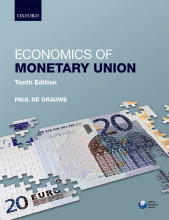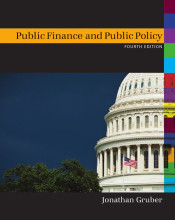Summary: Financial Markets And Corporate Strategy | 9780077129422 | David Hillier, et al
- This + 400k other summaries
- A unique study and practice tool
- Never study anything twice again
- Get the grades you hope for
- 100% sure, 100% understanding
Read the summary and the most important questions on Financial markets and corporate strategy | 9780077129422 | David Hillier; Mark Grinblatt; Sheridan Titman
-
2 Week 2
This is a preview. There are 2 more flashcards available for chapter 2
Show more cards here -
Why do formal lenders ration credit rather than raise interest rates?
This is possible if the expected return of a bank loan is not a monotonic function of the nominal interest rate
Cause: asymmetric information › Consequence: formal credit institutions shy away since raising interest rates can exacerbate incentive problems -
What is the difference between formal and informal markets. and how should we link them?
Formal markets have funds, lack information
informal markets have info, lack funds.
linking by using moneylenders as agents and increase supply of funds into local markets
Problems:
could lead to collusion
moneylender per borrower ^ -- MC^ -- R^-- Moneylenders^-- more alternative lenders -- lower repayment incentives -- R^ -
Mention the advantages and disadvantages of ROSCAS:
+ Except for last one everyone gains
+ disciplined way to accumulate savings
+ get money out of household
- drop out after early pot
- little flexibility
- no outside funds -
What are the advantages of group lending?
- Joint liabibility: information assymetries down
- only ''good'' borrowers
- self selection and screening: adverse selection down
- monitoring: moral hazard down -
What are limitations of group lending:
- How credible is threat of social sanctions (friends)
- attending meetings is costly
- sometimes difficult to tranfer responsibilities -
What are the differences between credit cooperatives and ROSCA
- CC more formal
- CC members do not have to wait term
- CC size of loan can vary
- CC storage of money/collateral -
Derive interest rate in ex ante moral hazard situation
net return with effort (Y-R)-C
Net return without effort p(Y-R)
(Y-r)-C > P(Y-R)
R < y -(c/1-p) then firms will exert effort -
Show that group lending leads to higher R (reduces moral hazard) in 2 persons group
2Y - 2R- 2C if effort
P^2 (2Y-2R) if no effort
(2y-2r)-2c > p^2(2Y-2R)
(2Y-2r) = 2C / (1-P^2)
y-R = C / (1-P^2) --> R = Y-((C / (1-P^2))
Since P^2 < P ... R will be higher before no effort. group lending therefore bettter for lender.
MAKES IT HARDER TO FREE RIDE -
3 Week 3
This is a preview. There are 2 more flashcards available for chapter 3
Show more cards here -
Derive the interest rate with adverse selection.
Safe borrowers: P=1 so total is p*q = q
Risky borrowers: (1-q)p
Lending cost K.
for safe Rs = K // for risky Rr = k/p
[Q+(1-Q)p] R = K -->> R = [ K / (q+(1-Q)p ]
So Rr>R>Rs , so contract is more attractive for Risky than safe therefore adverse selection -
Derive interest rates with assymetric information and group lending
Safe will group with safe: •
- Higher grades + faster learning
- Never study anything twice
- 100% sure, 100% understanding































